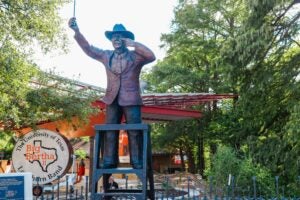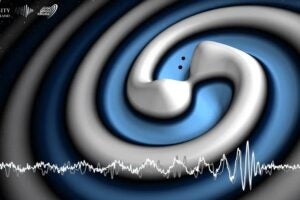An extraordinary collection of gems and minerals is now a click of the mouse away after students at The University of Texas at Austin’s Jackson School of Geosciences digitally photographed more than 6,300 specimens and made them available on a new, fully searchable Web site.
The site will be a tool for students learning to identify geological materials, scientists conducting basic research and people who shape or facet gems and minerals.
The specimens make up the Glenn and Martha Vargas Gem and Mineral Collection at the Jackson School. The late couple were internationally recognized authorities on lapidary arts, the fashioning of gems, minerals and rocks to create decorative items. They assembled their collections over 60 years beginning in the mid-1930s during travels in the western U.S., South America, Mexico, Australia, southeast Asia and Africa.
Mark Helper, a distinguished senior lecturer in the Jackson School who teaches a course on gems and faceting, oversaw the creation of the photo archive and Web site. He said it started as a classroom project with the goal of helping students learn to identify gems and minerals, as well as various gemstone cuts.
“We realized the collection wasn’t as accessible as we would like,” said Helper. “Cataloging the whole collection and putting it online would be a nice way to help people understand what’s in the collection and to advertise it.”
From 1975-1999, Glenn and Martha Vargas taught faceting, lapidary and gemology to thousands of students as part of the university’s Gems and Gem Minerals course. They are perhaps best known internationally for their book “Faceting for Amateurs,” a three-book series on facet diagrams, and for numerous articles in trade periodicals and magazines. Beginning in the 1940s and continuing through the 1990s, through their teaching, publications, faceting equipment and minerals businesses, they played a large role in popularizing faceting at the amateur level, helping turn what was once a secretive trade into a hobby enjoyed by millions.
Although the collection contains many outstanding gems, it is perhaps most notable for the variety of faceted minerals represented, many of which are seldom faceted.
“It was a point of pride among them that they could facet just about anything,” said Helper.
Equally unique is a faceting reference collection of more than 200 quartz gemstones that were cut to verify faceting diagrams prior to publication of the Vargas and Vargas three-book series “Diagrams for Faceting.”
“Seeing an example before faceting a gem to a particular cut is invaluable, as will be the photos of these reference gemstones,” said Helper.
Interesting “collections within the collection” also include mineral pseudomorphs, twinned crystals, synthetic gems and an extraordinary collection of gem quartz with inclusions. Helper said the value of the collection lies less in its monetary worth than its breadth.
“As geologists we aren’t so interested in the bling factor,” he said. “We’re more interested in the unusual, and there are plenty of unusual and rare gems in this collection.”
Visit the Vargas Gem and Mineral Collection Web site.



